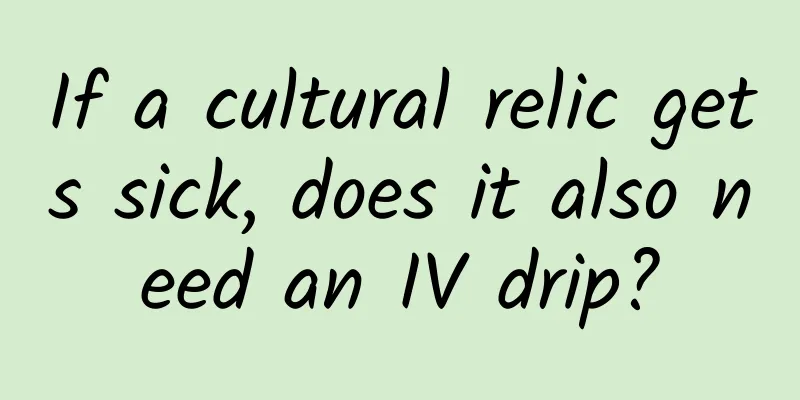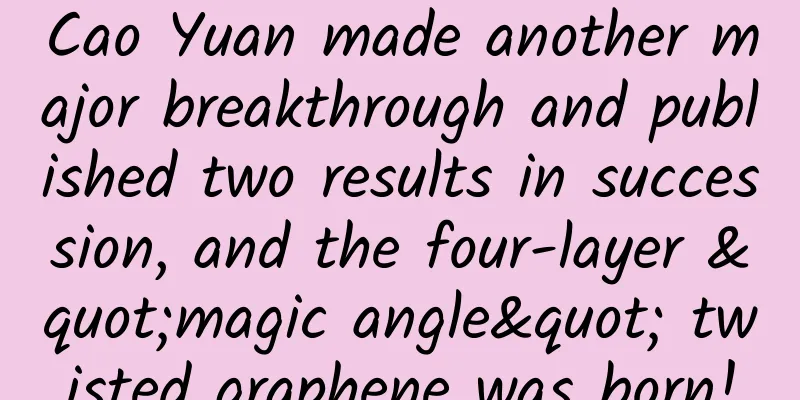If a cultural relic gets sick, does it also need an IV drip?

|
Do you see the IV drip in the picture? That's right. The IV drip is "piercing" these cave carvings. So are these carvings sick? Why are they being given IV drips? Do cultural relics also need IV drips when they are sick? Treatment of hanging bottles in the Ajanta Caves, India Image source: Sina Weibo @花落成生态 Image from: doi:10.3390/arts2030134 When I was a kid, there was a text called "Bian Que Meets Duke Huan of Cai" in which there is this passage: "If the disease is in the skin, it can be cured by hot water and ironing; if it is in the flesh, it can be cured by acupuncture and moxibustion; if it is in the intestines and stomach, it can be cured by fire and qi; if it is in the bone marrow, it is under the control of the God of Life, and there is nothing we can do about it." For "cultural relic doctors", that is, cultural relic protection workers, cultural relics are individuals with historical life, and the responsibility of "cultural relic doctors" is to do their best to discover the cause of the cultural relics' illness as early as possible and prescribe the right medicine in time to avoid the result that "the disease penetrates deep into the bone marrow" and cannot be saved. What should we do if cultural relics become sick? Before the protection and restoration work is carried out on cultural relics, the cultural relics have already told the "cultural relic doctor" where the problem is through their appearance. The "cultural relic doctor" conducts a detailed and scientific "diagnosis" of the "symptoms". This often requires the use of various scientific and technological auxiliary means, such as microscopes, X-rays, infrared and ultraviolet photography, etc., to give the cultural relics a comprehensive "physical examination". If necessary, samples from the "lesions" need to be taken for further laboratory analysis to determine the type of "disease". Finally, where the "health problems" of the cultural relics appear and the causes of these "health problems" will be reflected in the "physical examination report". This "physical examination report" will become the necessary scientific basis for "prescribing medicine" and "implementing treatment", and will finally be stored in the "treatment file" of the "patient" of this cultural relic. Expert consultation on stone statues For cultural relics, their diseases are called "diseases". The "cultural relic doctor" must first consult with the cultural relic body with diseases to understand the location, scope, severity, and causes of the diseases, and then formulate a specific protection and restoration plan, report it to the relevant departments, and implement it after further verification and approval by experts. Each step must be strictly followed to ensure the safety of the cultural relics. The entire preliminary investigation, consultation and analysis results, and the subsequent protection and restoration work must form a cultural relic protection and restoration file and be properly preserved. The diseases of cultural relics and how to "prescribe the right medicine" Some damage pictures of stone statues The diseases of stone cultural relics can be roughly divided into the following categories: In simple terms, the damage of cultural relics can be divided into surface damage and internal damage. For cave temples or stone statues, the most common surface damage is that the surface of the cultural relics is covered with pollutants such as dust, animal feces, and crystallized salt, and the surface paint layer of colored cultural relics is lifted. The "cultural relic doctor" will use a brush to remove dust, use a sharpened bamboo stick to remove harder coverings, and sometimes use laser "spot removal" to clean, and stick the lifted paint with glue that has been repeatedly tested and confirmed to be effective. Cultural relics protection experts remove and clean the pollutants on the surface of cultural relics Image source: Xinhuanet For defects below the surface of cultural relics that have not damaged the internal structure, such as flaking, it is necessary to mix and match inorganic fillers and bonding materials that are similar to the materials of the stone cultural relics. Replacing the missing parts of the stone statues Image source: Xinhuanet Damage that penetrates deep into the interior of a cultural relic or damages its structure is usually called structural damage. For example, through-going cracks, fractures, and collapses can be repaired by means of local completion, restoration, bonding, and repositioning. Bonding to restore broken blocks Image source: Xinhuanet For "diseases" that cannot be repaired deeply by surface repair, a treatment method that can reach deep inside must be adopted, which includes the method in the first photo - "intravenous drip". Specifically, such a situation is often encountered in my country's cave temple cultural relics. Large stone statues that cannot be moved on site have deep cracks deep inside, or the internal texture is too loose. In this case, the corresponding treatment agent needs to be delivered deep into the diseased part of the stone statue. For example, for small cracks, a composite reinforcement material containing adhesives such as epoxy resin and inorganic fillers can be used. It is "poured" into the cracks by hydraulic or pressurized methods. After the material solidifies, the cracks are filled and the stone cultural relics on both sides of the cracks are bonded together. For deep and wide cracks, it is sometimes necessary to use the above-mentioned grouting reinforcement combined with micro-anchors. The purpose is to tie the stone cultural relics on both sides of the crack together by adding a small anchor perpendicular to the crack on the basis of bonding. It can be said to play a "double insurance". This "bonding + anchoring" method is also used in the protection and restoration of large stone cultural relics. The anchoring structure is illustrated by the anchoring method of stone cultural relics Figure 1: Buried anchor Figure 2: Through anchor Figure 3: Bolt anchor Source: Reprinted from literature Protection and restoration is a delicate, highly professional and targeted job. The choice of each method, the consideration and implementation of each step are the result of specific problems and analysis of the cultural relics. Only by being so "specific" can we achieve the goal of "curing the disease with the right medicine" and extending the life of the cultural relics. It is the responsibility and mission of every "cultural relic doctor" to protect China's precious historical relics and convey more historical information to the audience. References: Chao Jianhong, Sun Chengting, Gong Gu. The rivet-type anchoring technology for the restoration of stone cultural relics[J]. Popular Archaeology, 2020(10):78-82 Author: Guo Rui, Xi'an Institute of Cultural Relics Protection and Archaeology Illustration: Shi Jingjing Xi'an Cultural Relics Exchange Center Acknowledgements: We would like to thank Tan Yuchen, a doctoral student at the Institute of History of Science and Cultural Heritage of University of Science and Technology Beijing, for providing scientific guidance for this article. Edit: Cabin — END — The copyright of the online pictures belongs to the original author The copyright of this article belongs to Shanghai Science and Technology Museum |
<<: 2021, those immortal stars
Recommend
Not sure if there's water on Mars? Maybe we can dig a well there!
It is unlikely that there is liquid water undergr...
Zhang Fuyuan's "3-minute freehand face sculpting" can slim your face, adjust your face shape, remove spots, and tighten your skin
No surgery or injections are required, it is abso...
Short video operation data analysis method!
In the previous sharing, we focused on the produc...
There are 6 ways to create a brand story that will spark discussion
New Balance tells a story about Li Zongsheng'...
Do B-side products need a user growth system?
Compared with C-end products that have made great...
How can the photography industry break through the market through Mayu advertising?
At present, the photography industry has develope...
From zero to the third largest e-commerce company, how did Pinduoduo increase its user base?
It took Pinduoduo two years and three months to b...
APP promotion: How to attract a large amount of free traffic?
If marketing were a science, I would rather be a ...
Humans tried to teach AI how to make a little sun, and the result was -
Recently, there was a big news in the field of nu...
After being cheated, it became a priceless treasure
Today's protagonist is not an ordinary wardro...
Why do many girls have a brown vertical line on their stomachs?
Reviewer of this article: Zhou Xiaobo, Doctor of ...
China's "compound eyes": tracking "uninvited guests" in space
If an asteroid hits the Earth one day, is it poss...
A case study tells you: What customer acquisition methods should be used to acquire new users
Today's article comes from a real problem aro...
A small project that can earn you hundreds of dollars in 2 hours a day. It is easy to understand.
A small project that can earn you hundreds of dol...
Cancer is caused by "saving"! Doctors reveal the truth! This bad habit must be changed
Experts in this article: Hu Houxiang, Chief Physi...
![【Yangyang】Material Decryption Season 1 VR Advanced Material Tutorial [HD Quality with Materials]](/upload/images/67cc2733a7006.webp)








